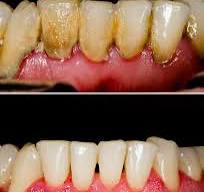INTRODUCTION:
HEALTH IS WEALTH-Natural remedies have been a cornerstone of healing for centuries, long before
the advent of modern pharmaceuticals. Across cultures and civilizations, people
have relied on nature’s gifts—herbs, roots, fruits, and holistic practices—to
restore health and vitality. While this encyclopedia does not seek to undermine
the importance of medical science, it aims to complement it by shedding light
on time-tested natural solutions. It encourages further research into the power of
nature in healing, offering insights into remedies that have provided relief to
countless individuals.
NATURAL REMEDIES FOR CELLULITIS
Cellulitis is a bacterial skin infection that typically requires medical
treatment, such as antibiotics. While natural remedies and herbs may
provide some relief from symptoms, they should not replace
conventional medical care. Always consult with a healthcare
professional if you suspect you have cellulitis. Here are some natural
remedies and herbs that may offer complementary support:
1. Turmeric (Curcuma longa):
How it works: Turmeric contains curcumin, which has anti-
inflammatory and antimicrobial properties. It can help reduce
inflammation and support the body’s immune response.
Preparation: Mix 1 teaspoon of turmeric powder with honey
or warm water to create a paste. Apply this paste to the affected
area and leave it on for 20–30 minutes before rinsing with warm
water. You can also consume turmeric in your diet or as a
supplement.
2. Aloe Vera (Aloe barbadensis miller):
How it works: Aloe vera has anti-inflammatory and
antimicrobial properties, which can help soothe skin and promote
healing.
Preparation: Extract the gel from an aloe vera leaf and apply
it directly to the affected area. Leave it on for 20–30 minutes
before rinsing. Aloe vera gel is readily available in most
drugstores and can also be grown at home.
3. Tea Tree Oil (Melaleuca alternifolia):
How it works: Tea tree oil has natural antimicrobial properties
that can help combat bacterial infections.
Preparation: Dilute a few drops of tea tree oil with a carrier oil
(such as coconut oil) and apply it to the affected area using a
cotton ball. Do this 2–3 times a day. Make sure to perform a patch
test first, as tea tree oil can cause skin irritation in some people.
You can find tea tree oil in health food stores or local markets
close to you.
4. Garlic (Allium sativum):
How it works: Garlic has antibacterial properties and can help
boost the immune system.
Preparation: Crush a few garlic cloves to form a paste. Apply
this paste to the affected area and leave it on for 15–20 minutes.
Rinse with warm water. You can also incorporate garlic into your
diet for its systemic benefits.
5. Calendula (Calendula officinalis):
How it works: Calendula has anti-inflammatory and wound-
healing properties that can help with skin infections.
Preparation: Make a calendula-infused oil by steeping dried
calendula flowers in olive or coconut oil for several weeks. Apply
the oil to the affected area as needed. You can find dried calendula
flowers at health food stores or local markets close to you.
6. Echinacea (Echinacea purpurea):
How it works: Echinacea is known for its immune-boosting
properties and may help the body fight off infections.
Preparation: Brew echinacea tea using dried echinacea root or
leaves. Drink it 2–3 times a day to support your immune system.
Echinacea products are widely available in health food stores.
Key Consideration
Remember that these natural remedies should be used as
complementary support and not as a sole treatment for cellulitis. If you
suspect you have cellulitis, consult a healthcare professional for proper
diagnosis and treatment, which often includes antibiotics. Additionally,
individual sensitivities and allergies can vary, so it’s important to
perform patch tests and consult with a healthcare provider if you have
any concerns about using these remedies.



